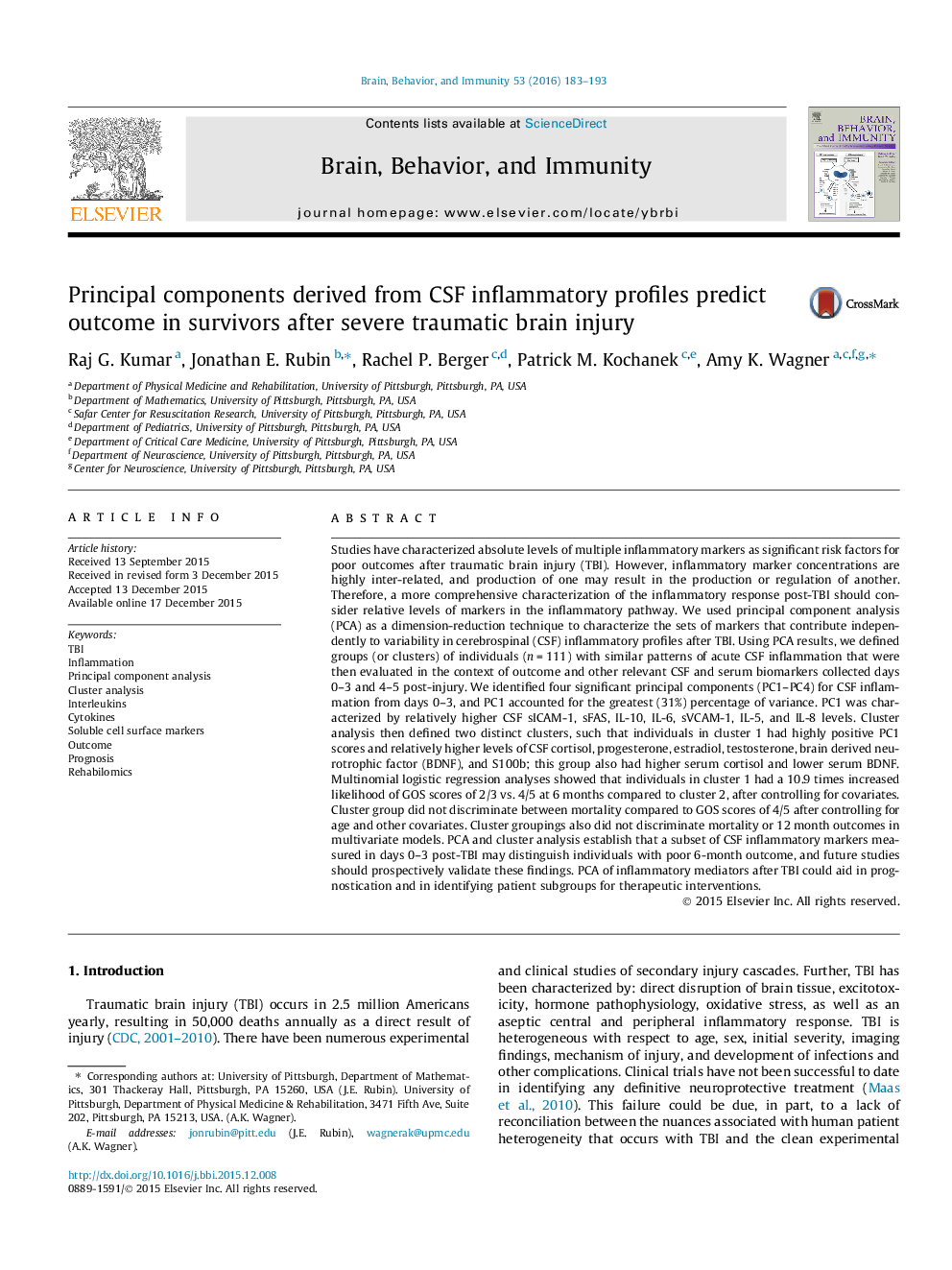| کد مقاله | کد نشریه | سال انتشار | مقاله انگلیسی | نسخه تمام متن |
|---|---|---|---|---|
| 922090 | 1473914 | 2016 | 11 صفحه PDF | دانلود رایگان |
• We report principal components of acute CSF inflammation in severe TBI.
• Using principal components, two unique clusters of TBI patients are identified.
• Day 0–3 cluster group is a significant predictor of poor outcomes at 6 months.
• Cluster groups discriminate CSF and serum hormone, BDNF, and s100b pathophysiology.
Studies have characterized absolute levels of multiple inflammatory markers as significant risk factors for poor outcomes after traumatic brain injury (TBI). However, inflammatory marker concentrations are highly inter-related, and production of one may result in the production or regulation of another. Therefore, a more comprehensive characterization of the inflammatory response post-TBI should consider relative levels of markers in the inflammatory pathway. We used principal component analysis (PCA) as a dimension-reduction technique to characterize the sets of markers that contribute independently to variability in cerebrospinal (CSF) inflammatory profiles after TBI. Using PCA results, we defined groups (or clusters) of individuals (n = 111) with similar patterns of acute CSF inflammation that were then evaluated in the context of outcome and other relevant CSF and serum biomarkers collected days 0–3 and 4–5 post-injury. We identified four significant principal components (PC1–PC4) for CSF inflammation from days 0–3, and PC1 accounted for the greatest (31%) percentage of variance. PC1 was characterized by relatively higher CSF sICAM-1, sFAS, IL-10, IL-6, sVCAM-1, IL-5, and IL-8 levels. Cluster analysis then defined two distinct clusters, such that individuals in cluster 1 had highly positive PC1 scores and relatively higher levels of CSF cortisol, progesterone, estradiol, testosterone, brain derived neurotrophic factor (BDNF), and S100b; this group also had higher serum cortisol and lower serum BDNF. Multinomial logistic regression analyses showed that individuals in cluster 1 had a 10.9 times increased likelihood of GOS scores of 2/3 vs. 4/5 at 6 months compared to cluster 2, after controlling for covariates. Cluster group did not discriminate between mortality compared to GOS scores of 4/5 after controlling for age and other covariates. Cluster groupings also did not discriminate mortality or 12 month outcomes in multivariate models. PCA and cluster analysis establish that a subset of CSF inflammatory markers measured in days 0–3 post-TBI may distinguish individuals with poor 6-month outcome, and future studies should prospectively validate these findings. PCA of inflammatory mediators after TBI could aid in prognostication and in identifying patient subgroups for therapeutic interventions.
Journal: Brain, Behavior, and Immunity - Volume 53, March 2016, Pages 183–193
